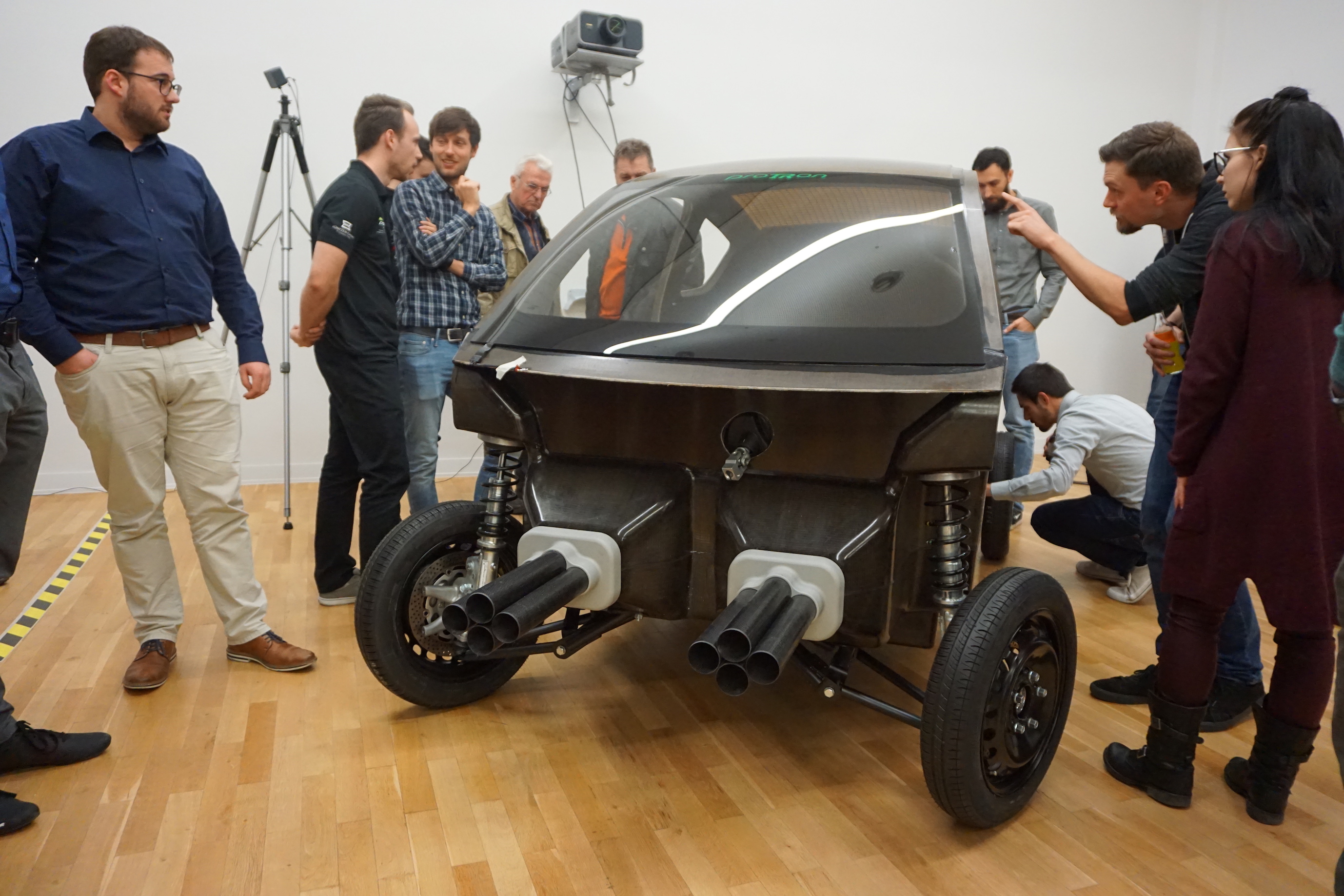Carlex Installs a Piece of Luxembourg in the State-of-the-Art Car of the Future

Troy, MI, November 20, 2019 --(PR.com)-- For about two years, Carlex Glass Luxembourg S.A. has been participating in the proTRon project, a futuristic automobile project being conducted at Trier University of Applied Sciences (Hochschule Trier). As a Luxembourg based company, developing and manufacturing automotive products for the global market, Carlex wanted to use this project and the proximity to the University to showcase its R&D capabilities as well as introduce the company to the students. In addition, the project provided a unique opportunity for engineers at Carlex to demonstrate the development of innovative products.
The development of the windshield for the proTRon EVOLUTION, the car of the 21st century, represented a particular challenge as an extremely light and stable glass was required, not existing in this form so far – an uncompromising lightweight construction had to be combined with the strict safety requirements of the automotive industry.
After the first prototype of the windshield was presented to the public on 17 October, it was time on 11 November to fit the windshield in the car. On 15 November the rolling chassis (passenger cabin consisting of a monocoque, roof module, engine unit and windshield) was presented for the first time to sponsors, supporters, alumni and students who were thus able to get an idea of the current status of the project.
An important step for the future
For the proTRon EVOLUTION project, Carlex succeeded in lowering even more the usual limits of lightweight construction and thus developed a windshield with a thickness of merely 2.6 mm and a weight of only 5.4 kilograms. In comparison, conventional windshields weigh typically more than twice as much.
This was necessary because the proTRon EVOLUTION was designed as a minimum curb weight vehicle for urban traffic. Nevertheless, the windshield had to meet all safety-relevant requirements.
A further challenge was to adapt the various Carlex manufacturing machines to the work with glass thicknesses of less than one millimeter. “Various processes had to be adapted and redesigned for production,” explains Wladislaw Bronstein, Engineer of Advanced Product Development at Carlex.
Another important issue was the electrical heating of the windshield. In a car with a typical internal combustion engine it is normally the residual heat of the engine that is utilized to de-ice the windshield or otherwise keep it clear. However, as an all-electric vehicle, the proTRon EVOLUTION will not have this possibility. Because of the very thin glass, this was also a major challenge for the engineers to incorporate the heating function right into the windshield design.
The production of such a windshield cannot be compared with the production of a conventional windshield. Years of experience and development have helped to make the almost impossible possible and manufacture this windshield for the urban mobility concept of the future.
The development of the windshield for the proTRon EVOLUTION, the car of the 21st century, represented a particular challenge as an extremely light and stable glass was required, not existing in this form so far – an uncompromising lightweight construction had to be combined with the strict safety requirements of the automotive industry.
After the first prototype of the windshield was presented to the public on 17 October, it was time on 11 November to fit the windshield in the car. On 15 November the rolling chassis (passenger cabin consisting of a monocoque, roof module, engine unit and windshield) was presented for the first time to sponsors, supporters, alumni and students who were thus able to get an idea of the current status of the project.
An important step for the future
For the proTRon EVOLUTION project, Carlex succeeded in lowering even more the usual limits of lightweight construction and thus developed a windshield with a thickness of merely 2.6 mm and a weight of only 5.4 kilograms. In comparison, conventional windshields weigh typically more than twice as much.
This was necessary because the proTRon EVOLUTION was designed as a minimum curb weight vehicle for urban traffic. Nevertheless, the windshield had to meet all safety-relevant requirements.
A further challenge was to adapt the various Carlex manufacturing machines to the work with glass thicknesses of less than one millimeter. “Various processes had to be adapted and redesigned for production,” explains Wladislaw Bronstein, Engineer of Advanced Product Development at Carlex.
Another important issue was the electrical heating of the windshield. In a car with a typical internal combustion engine it is normally the residual heat of the engine that is utilized to de-ice the windshield or otherwise keep it clear. However, as an all-electric vehicle, the proTRon EVOLUTION will not have this possibility. Because of the very thin glass, this was also a major challenge for the engineers to incorporate the heating function right into the windshield design.
The production of such a windshield cannot be compared with the production of a conventional windshield. Years of experience and development have helped to make the almost impossible possible and manufacture this windshield for the urban mobility concept of the future.
Contact
brain&more
Philippe Hammelmann
003522684711
www.brain.lu
Philippe Hammelmann
003522684711
www.brain.lu
Multimedia
Categories

